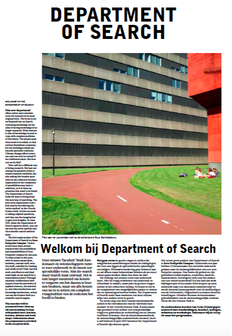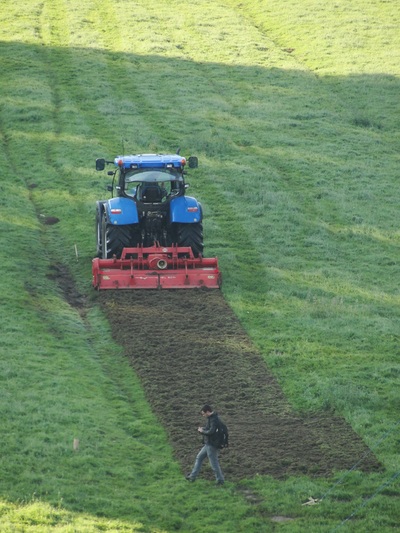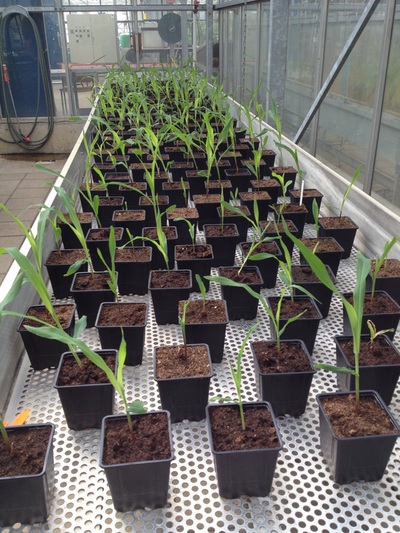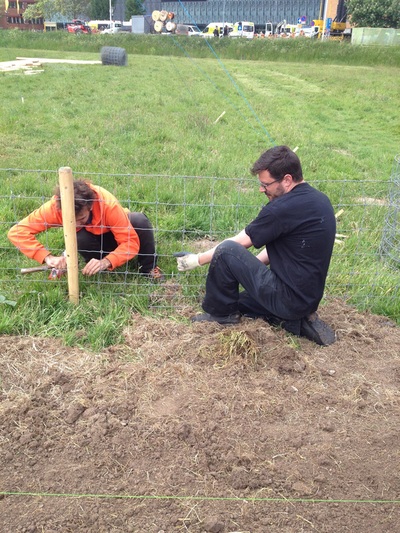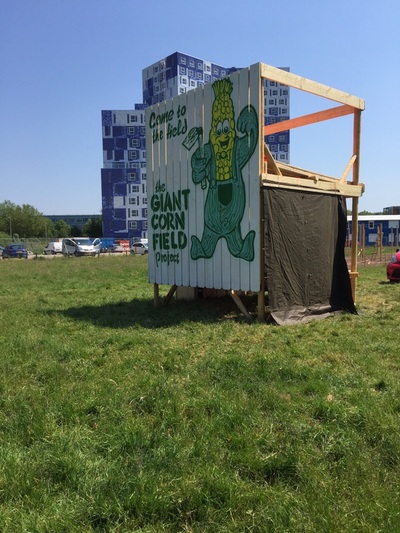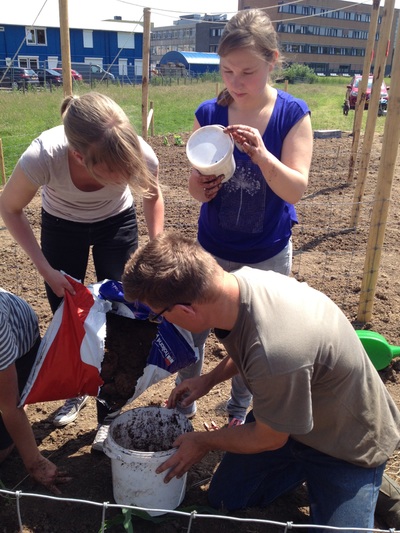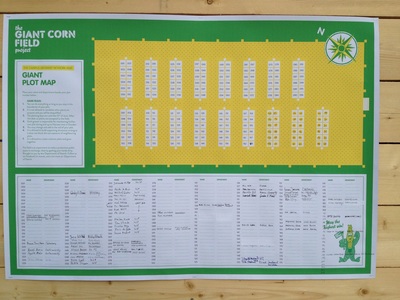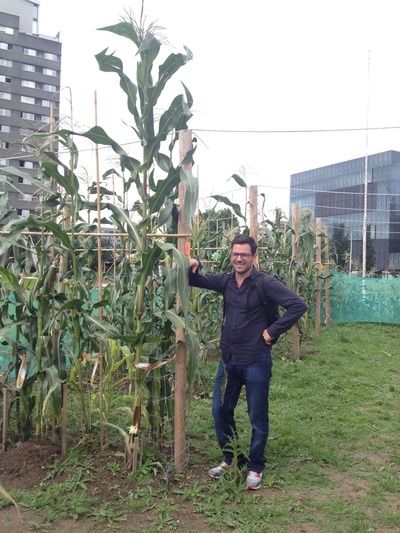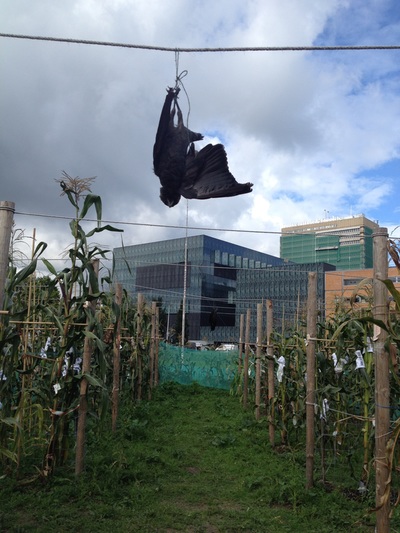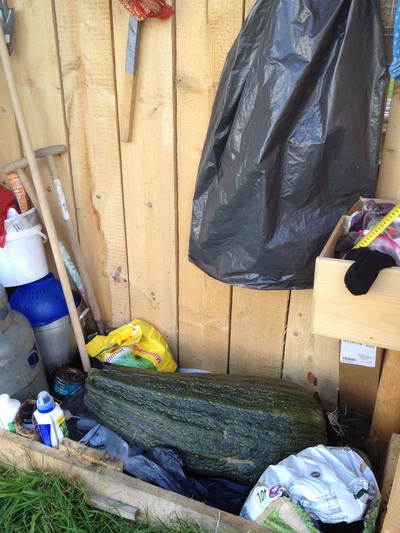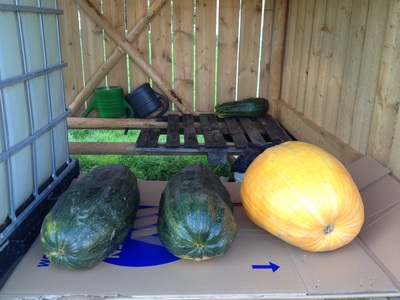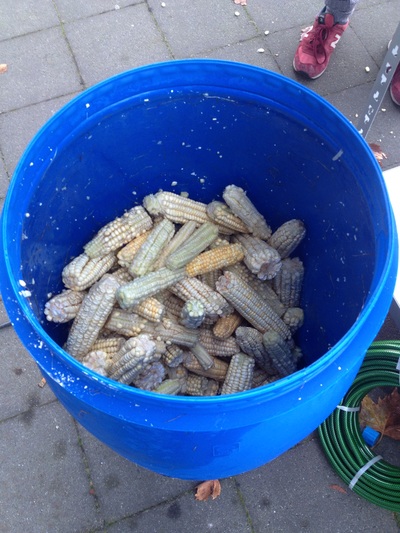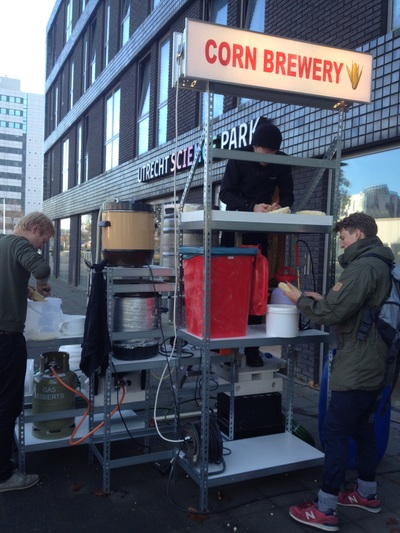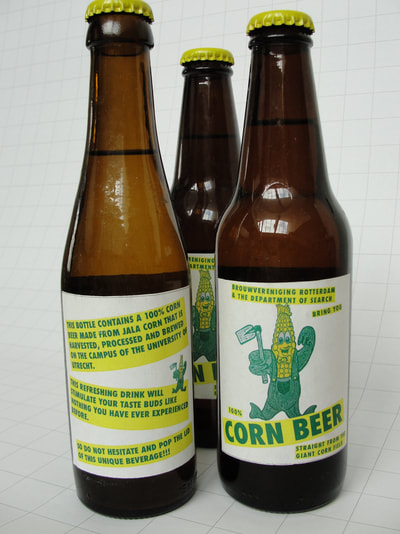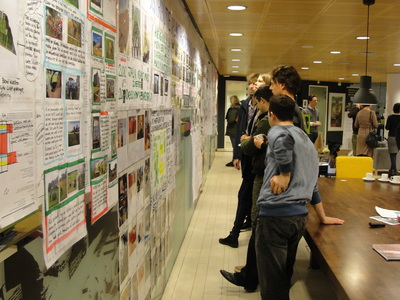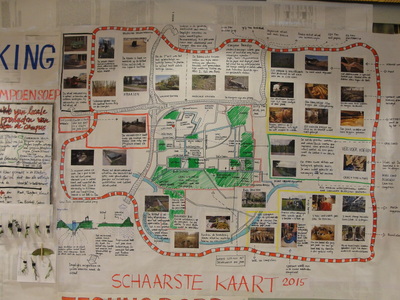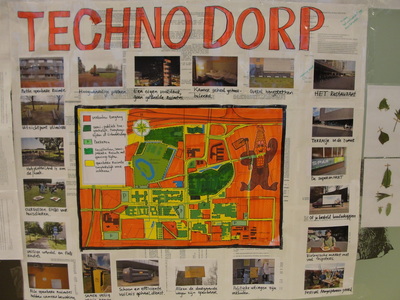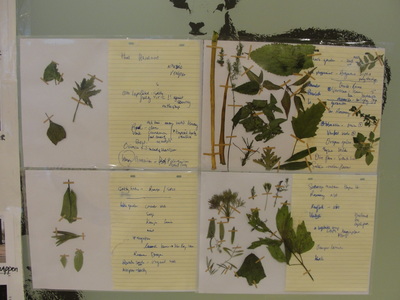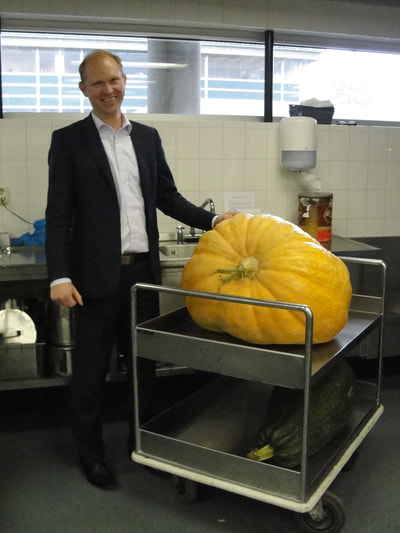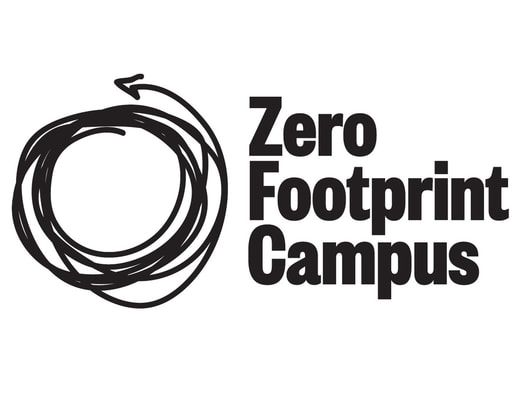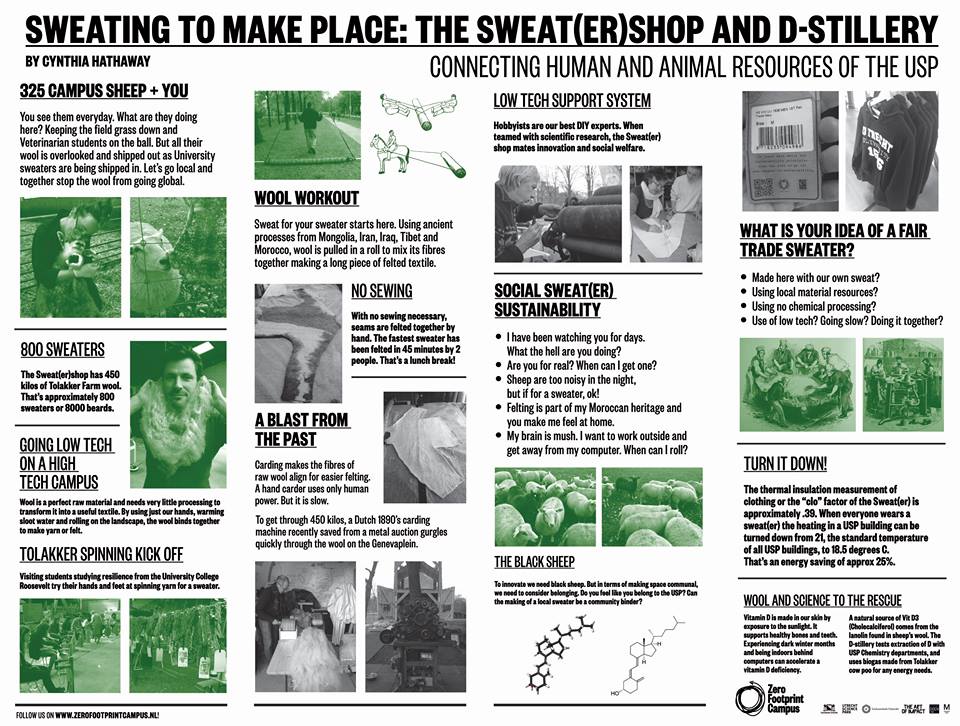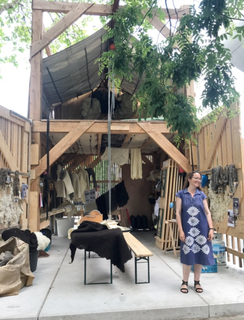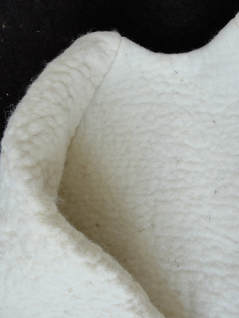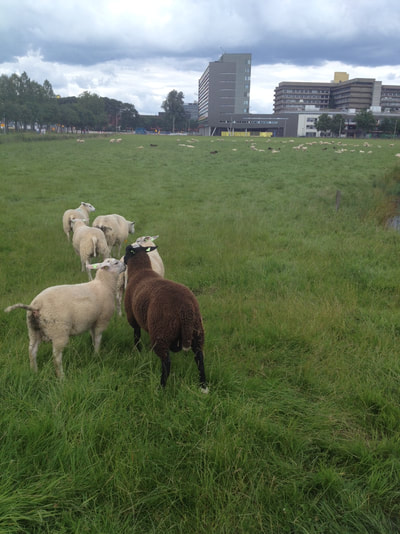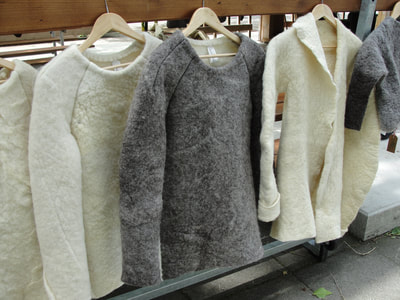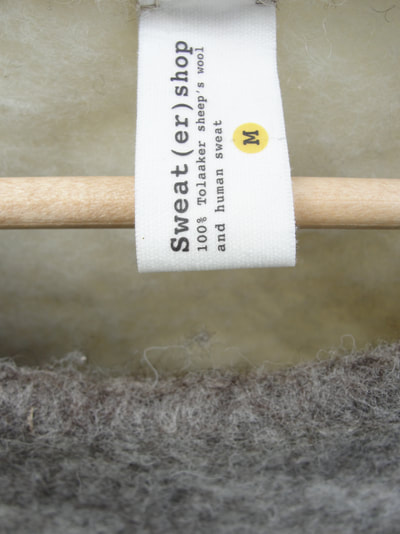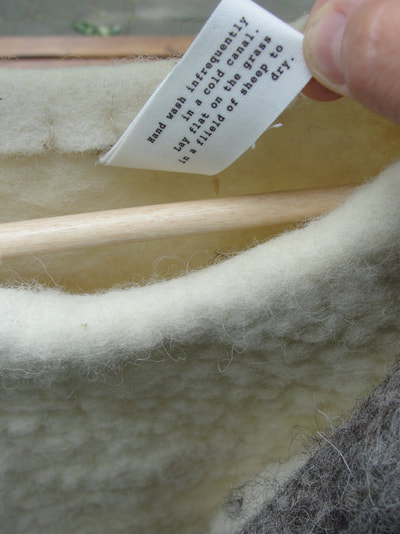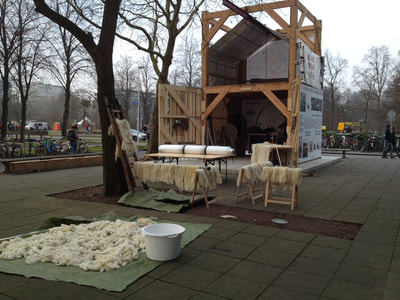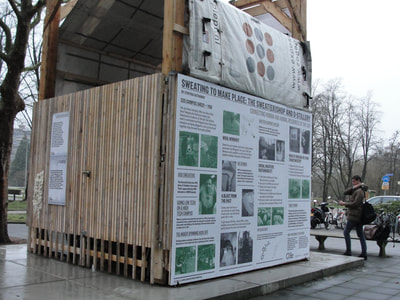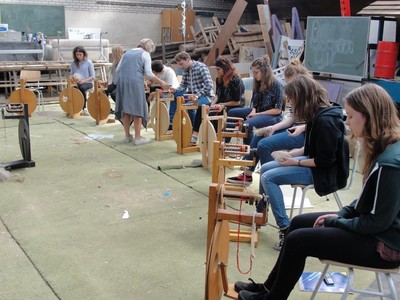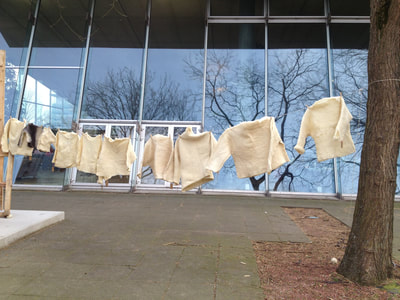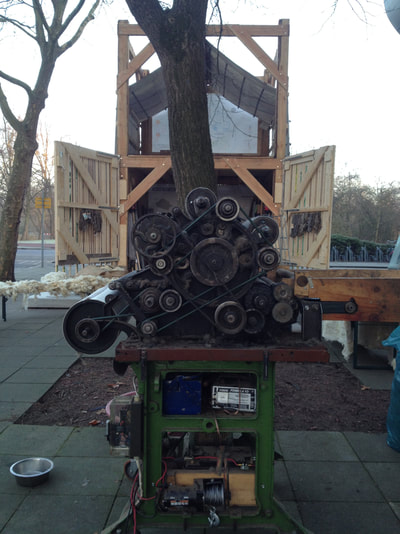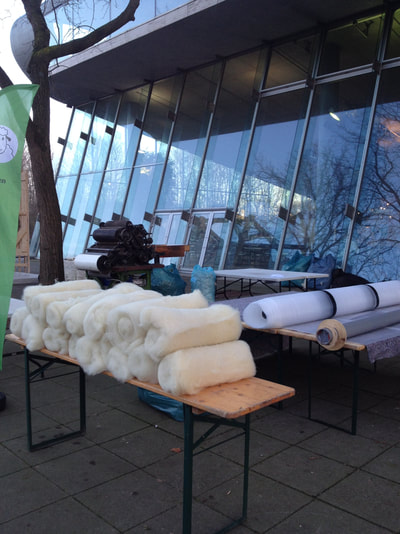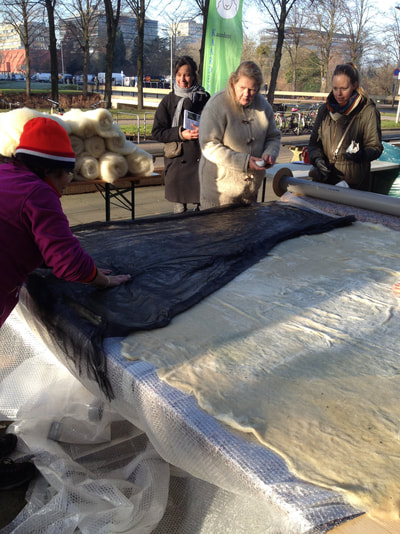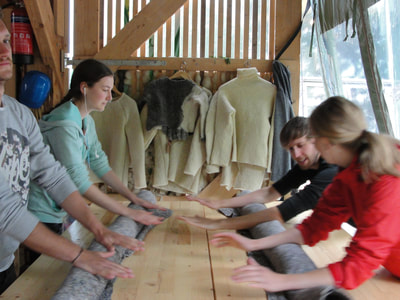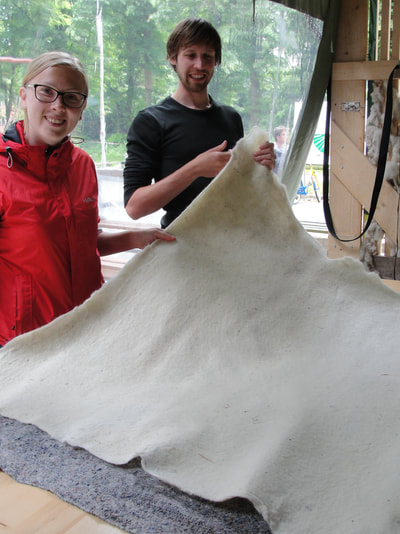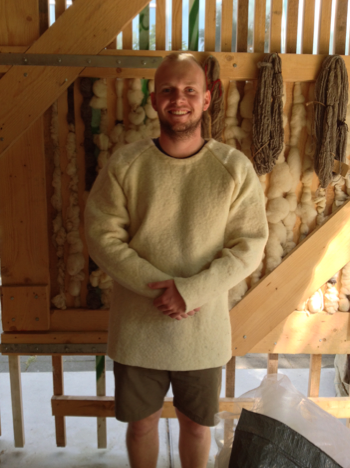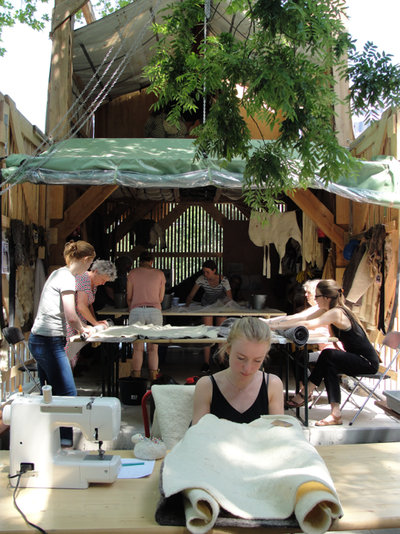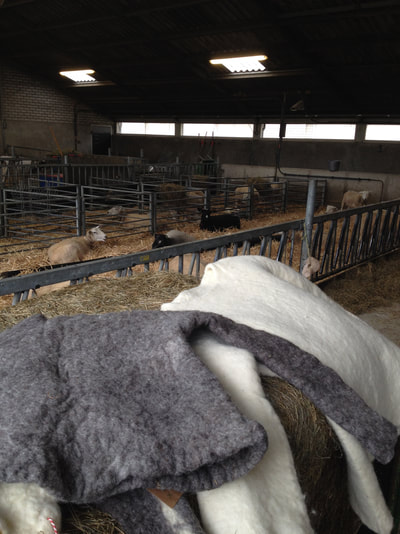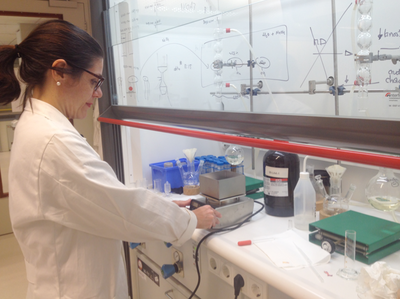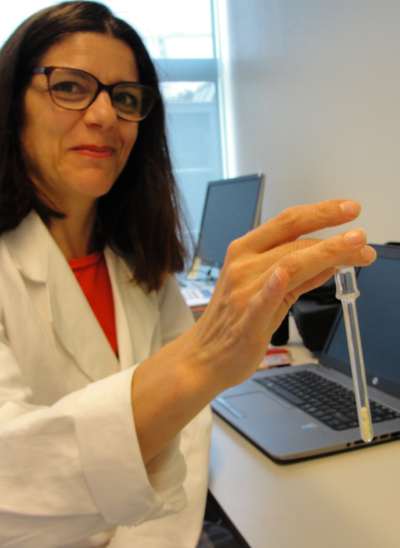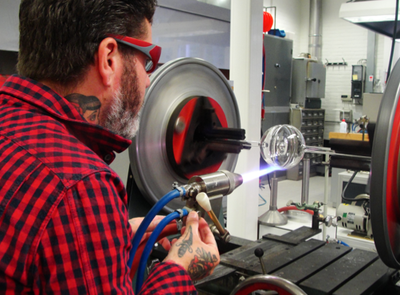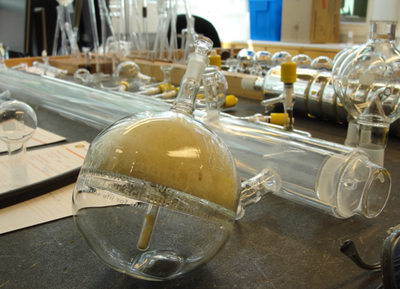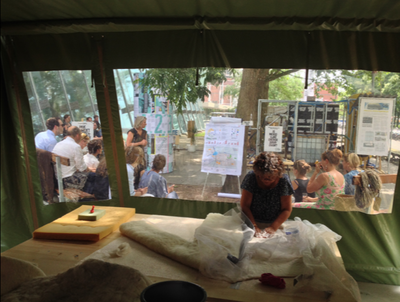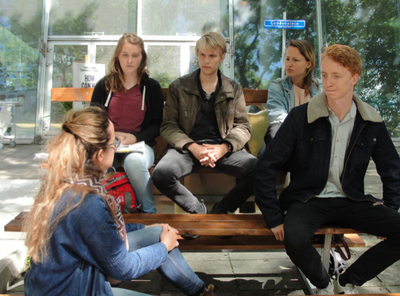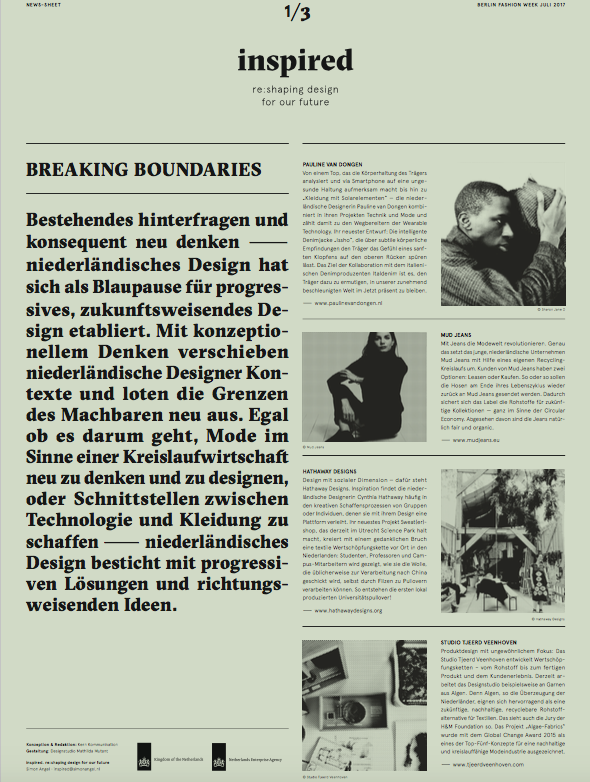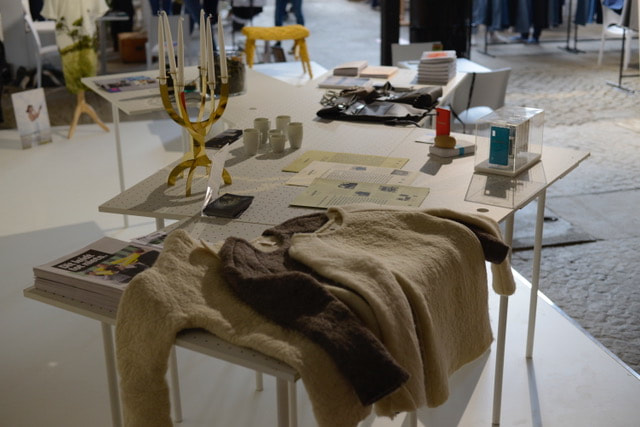The Department of Search
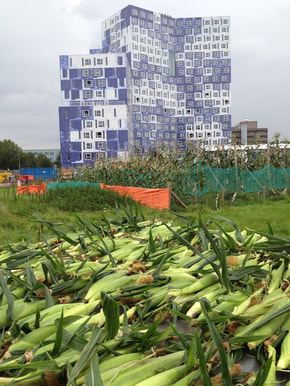
Created with artist Melle Smets in 2014, the Department of Search is currently set up on the University of Utrecht Uithof Campus (Utrecht Science Park). Using artistic interventions and perspectives, the production of collective space-making helps to resolve a campus suffering from a lack of belonging by its students, professors and employees. Using action research, the Department of Search collaborates with scientists for on-site research and tangible prototypes (such as the Giant Cornfield, Sweat(er)shop and D-Stillery) to support the University's effort towards not only a technological but socially sustainable campus. The Department of Search opened up academic research to external pools of expertise (giant vegetable hobbyists, maverick scientists, Professors of Serendipity, artistic scenario and map makers, creative searchers) to support collaborative knowledge focused on the immediate locale rather than elsewhere.
Download Department of Search's Newspaper here (mostly in Dutch with an English Introduction. A Department of Search book in English is being released soon.)
| krant-department-of-search.pdf | |
| File Size: | 8475 kb |
| File Type: | |
Department of Search Book
*Our book is out*:
The Department of Search was established in 2014 at Science Park Utrecht. This artist run department experimented for three years with action research interventions to establish new forms of encounters between art and science. This book unfolds the findings and speculates on the potential of a shared space to formulate the fundamental questions of the future.
The book design translates the search to the added value of art and science. It illustrates the space for experiment that is needed to break through conventional assumptions, methods and research questions that both disciplines need to come up with new ideas.
Editorial Board: Carlijn Diesfeldt, Cynthia Hathaway, Melle Smets
Editor: Ed van Hinte
Book Concept and Design: Studio Renate Boere
The book was made possible by: The Art of Impact, Provincie Utrecht, K.F. Hein Fonds, Mondriaan Fonds, Cultuurfonds, BankGiro Loterij Fonds
partners: Utrecht Science Park, Utrecht University, Gemeente Utrecht, Aardschap Foundation
To Order: https://goo.gl/pHqntL
The Department of Search was established in 2014 at Science Park Utrecht. This artist run department experimented for three years with action research interventions to establish new forms of encounters between art and science. This book unfolds the findings and speculates on the potential of a shared space to formulate the fundamental questions of the future.
The book design translates the search to the added value of art and science. It illustrates the space for experiment that is needed to break through conventional assumptions, methods and research questions that both disciplines need to come up with new ideas.
Editorial Board: Carlijn Diesfeldt, Cynthia Hathaway, Melle Smets
Editor: Ed van Hinte
Book Concept and Design: Studio Renate Boere
The book was made possible by: The Art of Impact, Provincie Utrecht, K.F. Hein Fonds, Mondriaan Fonds, Cultuurfonds, BankGiro Loterij Fonds
partners: Utrecht Science Park, Utrecht University, Gemeente Utrecht, Aardschap Foundation
To Order: https://goo.gl/pHqntL
The Giant Corn Field
During January 2015 - October 2015 the Giant Corn Field Project created the first community grown corn field of giant Jala Corn on campus. The field was created to see if we, The Department of Search, could get scientists out of their departments and apply their expertise to the the field, and in doing so create a public space in a campus of disconnection and lack of free (non-commercial and departmental) meeting spaces. To attract scientists, we turned to a giant corn species introduced by expert and giant vegetable grower Brad Wursten. These plants can grow very high, with the world record 10.3meters to beat. We had a chance as a campus community to submit our highest corn to the Dutch Giant Vegetable Competition. 200 corn plants were distributed to employees, students, researchers, and a variety of other stakeholders of the campus including bus drivers. With a corn planting party, the field was open for takers to come and start growing in the competition.The giant corn and vegetables were harvested and the tallest corn (3.88meters of Prof. Hilda Aardema) got an "Encouragement Award" from the DGVC. Giant vegetables were also grown, and were harvested to make soup in the prepared in tthe Educatorium Canteen that feeds thousands a day, and was a way to test the capacity of feeding local with local.The field was a semi-success, as lots planted, but had no time to look after their corn plant for many reasons (stress, no time, no green thumbs even from biologists) which gave us instant feedback and validated the need to create more free space in the campus, and in curriculums for searching. In the Zero Footprint Campus project (see below) we realised we must share a topic of the University to find common ground, and formulate questions together.
https://www.facebook.com/Department-of-Search-1439659786329872/
During January 2015 - October 2015 the Giant Corn Field Project created the first community grown corn field of giant Jala Corn on campus. The field was created to see if we, The Department of Search, could get scientists out of their departments and apply their expertise to the the field, and in doing so create a public space in a campus of disconnection and lack of free (non-commercial and departmental) meeting spaces. To attract scientists, we turned to a giant corn species introduced by expert and giant vegetable grower Brad Wursten. These plants can grow very high, with the world record 10.3meters to beat. We had a chance as a campus community to submit our highest corn to the Dutch Giant Vegetable Competition. 200 corn plants were distributed to employees, students, researchers, and a variety of other stakeholders of the campus including bus drivers. With a corn planting party, the field was open for takers to come and start growing in the competition.The giant corn and vegetables were harvested and the tallest corn (3.88meters of Prof. Hilda Aardema) got an "Encouragement Award" from the DGVC. Giant vegetables were also grown, and were harvested to make soup in the prepared in tthe Educatorium Canteen that feeds thousands a day, and was a way to test the capacity of feeding local with local.The field was a semi-success, as lots planted, but had no time to look after their corn plant for many reasons (stress, no time, no green thumbs even from biologists) which gave us instant feedback and validated the need to create more free space in the campus, and in curriculums for searching. In the Zero Footprint Campus project (see below) we realised we must share a topic of the University to find common ground, and formulate questions together.
https://www.facebook.com/Department-of-Search-1439659786329872/
The Zero Footprint Campus
In 2016, The Department of Search investigated with various artists and a network of scientists the theme of sustainability in the local environs of the Uithof Utrecht Science Park. By collaborating on shared themes to do with the sustainability of the campus, we built a large network and made productive relationships, building prototypes to create conversation rather than solutions. Artistic thinking was shown to be very efficient at showing various obstacles in place for art and science to meet and collaborate. Many of these obstacles are small (like rules where one can gather in public space) to a bureaucratic set up that deactivates personal responsibility. The Department of Search found ways to go around rather then be impeded by over regulation. With 12 artists scattered throughout departments and with individual researchers, the desire to think and apply sustainable research to one's immediate surroundings and daily habits was kick-started and recognised as an important learning approach and tool. A goal of the Department of Search was to manage expectations of what artistic research is. We believe it is a long term process, and artistic output (prototypes such as the Sweat(er)shop) are not final pieces but activators of communal curiosity and open thinking vital for any innovation process, or issues to do with society. The Department of Search held a month long public program in June 2017 to experience artistic research in practice, and share the dilemmas and desires in common between artistic and scientific exploration. The first public meeting space was developed in the heart of the campus, where for example, students, professors, city councillors, art institute directors and public space policy makers openly discussed the future of the campus.
Participating Artists of ZFC:
Melle Smets and Kris de Decker, Cynthia Hathaway, Monnik (Christiaan Fruneaux and Edwin Gardner), Read-in (Svenja Engels, Annette Krauss, Luara Pardo, Ying Que), Arne Hendriks, Friendly Stalking, Maarten Vanden Eynde, Laurent Tixador, Bureau d'Etudes, Van Blankensteyn (Guido Marsille, Alexander Prinsen), Helmut Smits
Website: http://www.zerofootprintcampus.nl/en/
The ZFC and the projects leading up to it, the artistic methods used to create public debate and responsibility, and a call for art and science to come together for challenges of society is complied in a book, The Department of Search: Where Art and Science Create Debatable Futures. Editorial Board and texts: Cynthia Hathaway, Melle Smets and Carlijn Diesfeldt and Ed van Hinte. Designed by Studio Renate Boere.
To order a copy visit https://goo.gl/zK8pWn For international orders: https://goo.gl/pHqntL
The Sweat(er)shop and D-Stillery
As part of the artistic team for the Zero Footprint Campus project, Hathaway opened the Sweat(er)shop and D-stillery on campus. Her (re)search focused upon how scientific use of sheep's wool creates new connections between man, animal and landscape. Additionally, Hathaway created opportunities to utilize campus resources optimally for the campus.
The search brought to light the many opportunities for local food production that are available at the Utrecht Science Park. The organic cows at the Tolakker research farm produce about 750,000 liters of excellent milk a year, which is taken elsewhere. Some restaurants on the campus use a much smaller amount, asking why the farm's milk is not providing local needs?
The campus has extensive meadows where about 325 sheep graze. The sheep are part of the Tolakker farm where students receive veterinary education. Hathaway was given 450 kilos of sheep's wool normally taken away after shearing and made it into a rich resource for the local production of clothing (University sweaters) and vitamin D3 from the lanolin. Together with the Chemistry Faculty of Life Science Hathaway investigated how to use the lanolin from the oily wool for the extraction of vitamin D. The Sweat(er) Shop tested to what extent local consumers have the desire and the ability to go local.
The search brought to light the many opportunities for local food production that are available at the Utrecht Science Park. The organic cows at the Tolakker research farm produce about 750,000 liters of excellent milk a year, which is taken elsewhere. Some restaurants on the campus use a much smaller amount, asking why the farm's milk is not providing local needs?
The campus has extensive meadows where about 325 sheep graze. The sheep are part of the Tolakker farm where students receive veterinary education. Hathaway was given 450 kilos of sheep's wool normally taken away after shearing and made it into a rich resource for the local production of clothing (University sweaters) and vitamin D3 from the lanolin. Together with the Chemistry Faculty of Life Science Hathaway investigated how to use the lanolin from the oily wool for the extraction of vitamin D. The Sweat(er) Shop tested to what extent local consumers have the desire and the ability to go local.
| sweat_er_shop_billboard_copyright_hathaway.pdf | |
| File Size: | 11918 kb |
| File Type: | |
The Sweat(er)shop was set up in the middle of the campus, and hosted numerous public workshops to make one's own sweater form local wool. The Sweat(er)shop became a community production hub, where a diversity of employees, students, researchers, staff and general public came together (approx 300) and create a chain of production. As a open space, the Sweat(er)shop quickly became a meeting space to discuss research tracks and the state of education in general. The goal of Hathaway was not to be a sweater maker but to promote wool as a producer of the commons in a disconnected landscape. By disconnected landscapes, Hathaway means disconnections between expertise and experts, to one's surroundings, to other species and to each other.
The Sweat(er)shop continues as a research lab for making public meeting spaces, and is developing the 'Wool Alliance for Social Agency' with various partners and locations where wool is to be found and to put to the repair of disconnected communities. For further information and partnership possibilities, please contact [email protected]
The Sweat(er)shop sends special thanks to Wendy Cornelis (Fashion Designer) and Oliva Garcia (Felting Expert) for their dedication and expertise during the ZFC project.
USP Collaborative Partners:
Tolakker Research Farm
HU Life Sciences and Chemistry
Scientific Instrumentation Glass Workshop
Department of Cultural Anthropology
Utrecht Botanic Gardens
Sodexo Educatorium Canteen
Furthermore:
Andre and Karin Snoeijers, De Wolkelder
Bart Hoogeboom and Tanya Hendrickx, Kaarderij Wollust
Sietske Klooster, de Melk Salon
http://www.zerofootprintcampus.nl/
The Sweat(er)shop continues as a research lab for making public meeting spaces, and is developing the 'Wool Alliance for Social Agency' with various partners and locations where wool is to be found and to put to the repair of disconnected communities. For further information and partnership possibilities, please contact [email protected]
The Sweat(er)shop sends special thanks to Wendy Cornelis (Fashion Designer) and Oliva Garcia (Felting Expert) for their dedication and expertise during the ZFC project.
USP Collaborative Partners:
Tolakker Research Farm
HU Life Sciences and Chemistry
Scientific Instrumentation Glass Workshop
Department of Cultural Anthropology
Utrecht Botanic Gardens
Sodexo Educatorium Canteen
Furthermore:
Andre and Karin Snoeijers, De Wolkelder
Bart Hoogeboom and Tanya Hendrickx, Kaarderij Wollust
Sietske Klooster, de Melk Salon
http://www.zerofootprintcampus.nl/
Sweat(er)shop in Berlin at Ethical Fashion Show
The Sweat(er)shop caught the eye of Simon Angel, (INSPIRED) and off they went to
Dutch Sustainable Business Lounge at the Funkhaus during the Green Showroom and the Ethical Fashion Show
Dutch Sustainable Business Lounge at the Funkhaus during the Green Showroom and the Ethical Fashion Show
| newssheets_inspired_2017.pdf | |
| File Size: | 5344 kb |
| File Type: | |
